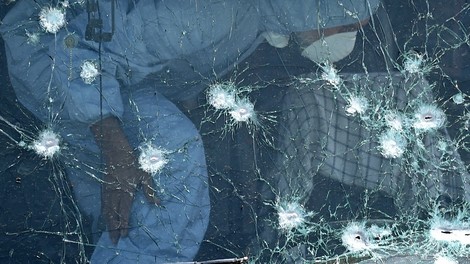Your podcast discovery platform
Curious minds select the most fascinating podcasts from around the world. Discover hand-piqd audio recommendations on your favorite topics.

piqer for: Globalization and politics Global finds
Sezin Öney, originally from Turkey, is based in Budapest and Istanbul. She her journalism career as a foreign news reporter in 1999 and she turned into political analysis as a columnist since 2007. Her interest in her main academic subject area of populism was sparked almost decade ago; and now she focuses specifically on populist leadership, and populism in Turkey and Hungary. She studied international relations, nationalism, international law, Jewish history, comparative politics and discourse analysis across Europe.
When Hope Is Gone: Letter From A Deceased Journalist
On 30 April 2018, twin suicide bombings rocked Afghanistan's capital, Kabul. The second of these bombings targeted journalists arriving at the scene to cover the news.
Among the journalists killed was Shah Marai, an Afghan photographer who had been working for Agence France Presse (AFP) since 1998. Marai never stopped working. Not even when the Taliban regime strictly prohibited photographing of living creatures — people and animals alike. Working relentlessly, Marai captured some of the most outstanding images, highlighting the life throughout Afghanistan.
In 2016, he penned an article for AFP's blog titled "When hope is gone". Unfortunately, I was among those discovering the article only after Marai was killed. He describes in a very plain, and consequently very striking way, his life as a journalist in Afghanistan.
For Marai, "hope" arrived when the Taliban left.
Then one morning, the Taliban were gone, vanishing into thin air. You should have seen it. The streets were filled with people. It was like people were coming out from the shadows into the light of life again.
But hope did not last and departed in a very bitter way — without a trace.
But there is no more hope. Life seems to be even more difficult than under the Taliban because of the insecurity. I don’t dare to take my children for a walk. I have five and they spend their time cooped up inside the house. Every morning as I go to the office and every evening when I return home, all I think of are cars that can be booby-trapped, or of suicide bombers coming out of a crowd. I can’t take the risk. So we don’t go out.
But Marai had to risk it; it was his work to risk it — just as all other journalists. And he became a victim of one of the suicide attacks that he had been photographing for almost 15 years.
May Shah Marai and his colleagues who lost their lives in the attack rest in peace. And let us all remember the value of journalism, as well as peace.
